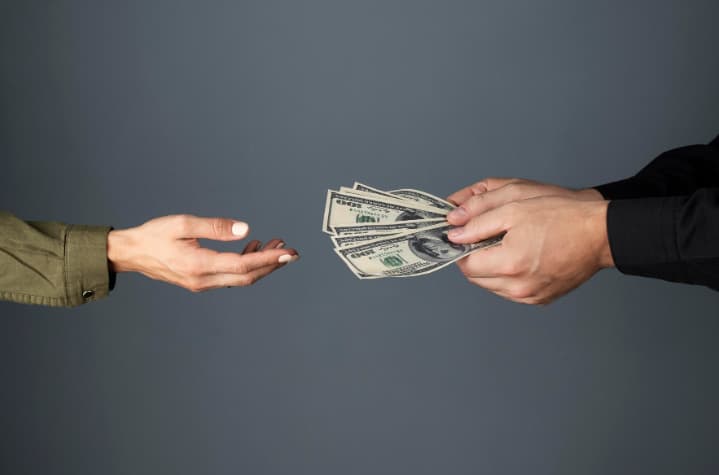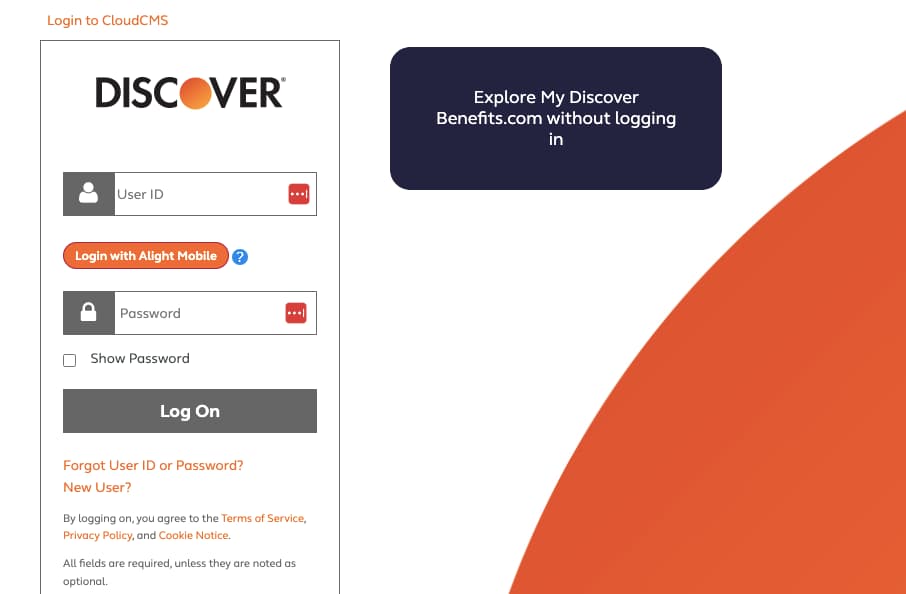Starting a yoga business in 2024 is an exciting venture filled with potential. As the wellness industry continues to grow, more people are turning to yoga for physical and mental well-being.
This comprehensive guide will walk you through every aspect of launching your own yoga business, from getting certified to marketing your services.
Whether you dream of opening a studio, teaching online, or running retreats, we’ll cover the essential steps to turn your passion for yoga into a thriving enterprise.
With the right planning, dedication, and business savvy, you can create a successful yoga business that not only supports you financially but also makes a positive impact on your students’ lives.
How To Start A Yoga Business in 2024?

Why Start a Yoga Business in 2024?
Starting a yoga business in 2024 is an exciting opportunity. Yoga has become more popular than ever. People are looking for ways to stay healthy and reduce stress. This makes it a great time to start a yoga business.
Here are some reasons why:
- Growing demand: More people want to try yoga. In 2024, the number of yoga practitioners is expected to keep growing.
- Health awareness: People care more about their health now. Yoga is seen as a good way to stay fit and calm.
- Flexible business models: You can teach in a studio, online, or both. This gives you many options to run your business.
- Low start-up costs: Compared to other businesses, starting a yoga business can be cheap. You can start small and grow over time.
- Personal fulfillment: Teaching yoga lets you help others while doing something you love.
- Work-life balance: As a yoga business owner, you can often set your schedule.
Here’s a simple breakdown of the yoga market growth:
| Year | Number of Yoga Practitioners in the US (millions) |
|---|---|
| 2012 | 20.4 |
| 2016 | 36.7 |
| 2020 | 55.1 |
| 2024 | 70.0 (projected) |
This growth shows that more people are getting into yoga. It means there’s room for new yoga businesses. If you’re passionate about yoga and want to share it with others, 2024 could be your year to start.
What’s Happening in the Yoga Industry Right Now?
The yoga industry is changing fast. In 2024, we’re seeing new trends and shifts in how people practice and teach yoga. Here’s what’s happening:
1. Online yoga is here to stay
- Many people got used to online classes during the pandemic.
- Virtual classes offer flexibility for busy schedules.
- You can reach students anywhere in the world.
2. Specialized yoga is growing
- People want yoga for specific needs (like yoga for athletes, prenatal yoga, or yoga for seniors).
- Niche classes can help you stand out in a crowded market.
3. Yoga therapy is becoming more popular
- More people are using yoga to help with health issues.
- Some insurance companies are starting to cover yoga therapy.
4. Eco-friendly and sustainable practices
- Yoga businesses are focusing more on being environmentally friendly.
- This includes using sustainable mats and props and reducing waste.
5. Mental health focus
- Yoga is being recognized more for its mental health benefits.
- Classes focusing on stress relief and mindfulness are in high demand.
6. Technology integration
- Apps and wearable tech are being used more in yoga practice.
- Some studios are using AI to personalize class recommendations.
7. Inclusive yoga movement
- There’s a push for yoga to be more welcoming to all body types, ages, and backgrounds.
- Classes for underrepresented groups are becoming more common.
Here’s a table showing the popularity of different yoga styles in 2024:
| Yoga Style | Popularity (%) |
|---|---|
| Hatha | 25% |
| Vinyasa | 30% |
| Yin | 15% |
| Hot Yoga | 10% |
| Restorative | 12% |
| Others | 8% |
Understanding these trends can help you shape your yoga business. You might choose to focus on one of these growing areas or find a way to combine several trends in your offerings.
Are You Ready to Be a Yoga Entrepreneur?
Before diving into starting a yoga business, it’s important to check if you’re ready. Being a yoga entrepreneur is different from just practicing or teaching yoga. Here are some things to think about:
1. Your yoga skills and experience
- How long have you been practicing yoga?
- Have you completed teacher training?
- Are you comfortable demonstrating poses and guiding others?
2. Your teaching ability
- Do you enjoy teaching and helping others?
- Can you explain yoga concepts clearly?
- Are you patient and good at working with different types of people?
3. Your business skills
- Do you understand basic business concepts?
- Are you organized and good at time management?
- Can you handle finances and budgeting?
4. Your personality traits
- Are you self-motivated?
- Can you handle the ups and downs of running a business?
- Are you willing to learn new things?
5. Your goals and vision
- Why do you want to start a yoga business?
- What do you hope to achieve?
- How does this fit into your long-term plans?
Here’s a simple self-assessment checklist:
| Skill/Trait | Yes | No | Need to Improve |
|---|---|---|---|
| Strong yoga practice | |||
| Teaching experience | |||
| Business knowledge | |||
| Time management skills | |||
| Financial planning ability | |||
| Marketing and promotion skills | |||
| Self-motivation | |||
| Adaptability | |||
| A clear vision for your business |
If you answered “Yes” to most of these, you might be ready to start your yoga business. If you have many “No” or “Need to Improve” answers, don’t worry. You can work on these areas. Take courses, read books, or find a mentor to help you improve.
Remember, no one is perfect when they start. The most important things are your passion for yoga and your willingness to learn and grow as a business owner.
How to Become a Certified Yoga Trainer?

Becoming a certified yoga trainer is a crucial step in starting your yoga business. Here’s how you can do it:
1. Choose a Yoga Teacher Training Program
- Look for programs registered with Yoga Alliance, the largest yoga nonprofit organization.
- Options include 200-hour, 300-hour, and 500-hour certifications.
- 200 hours is the standard starting point for most new teachers.
- You also check The Best Yoga Teacher Training in the USA.
2. Types of Training Programs
- Intensive: Full-time training over a few weeks or months.
- Part-time: Training spread out over several months, often on weekends.
- Online: Some programs offer fully online or hybrid options.
3. What You’ll Learn
- Yoga philosophy and history
- Anatomy and physiology
- Teaching methodology
- Yoga poses (asanas) and sequences
- Meditation and breathing techniques
- Ethics of Teaching Yoga
4. Choosing the Right Program Consider these factors:
- Style of yoga (Hatha, Vinyasa, Ashtanga, etc.)
- Reputation of the school and teachers
- Cost and payment options
- Location and schedule
- In-person vs. online options
5. Steps to Certification
- Complete the required training hours
- Pass any required exams or assessments
- Obtain CPR certification (often required)
- Register with Yoga Alliance (optional but recommended)
6. Continuing Education
- Yoga education doesn’t stop after initial certification.
- Many teachers pursue additional training and specializations.
Here’s a comparison of common yoga certifications:
| Certification | Hours | Typical Duration | Suitable For |
|---|---|---|---|
| 200-hour RYT | 200 | 1-3 months | Beginners, new teachers |
| 300-hour RYT | 300 | 3-6 months | Experienced 200-hour teachers |
| 500-hour RYT | 500 | 6-12 months | Advanced teachers |
Remember, becoming certified is just the beginning. The real learning often happens when you start teaching. Stay curious, keep practicing, and always be open to learning more about yoga and teaching.
What’s Your Yoga Niche?

Finding your yoga niche is key to standing out in the crowded yoga market. Your niche is your special focus or area of expertise. Here’s how to find and develop your niche:
1. Assess Your Strengths and Interests
- What type of yoga do you enjoy most?
- What are you particularly good at?
- What aspects of yoga excite you the most?
2. Consider Your Personal Experience
- Have you overcome health issues through yoga?
- Do you have a background in another field (like sports or dance) that you can incorporate?
3. Identify Gaps in the Market
- What types of yoga classes are missing in your area?
- Is there a group of people not being served by current yoga offerings?
4. Common Yoga Niches
- Prenatal and postnatal yoga
- Yoga for seniors
- Kids Yoga
- Corporate Yoga
- Yoga therapy
- Yoga for athletes
- Plus-size yoga
- LGBTQ+ focused yoga
5. Combine Yoga with Other Practices
- Yoga and meditation
- Yoga and Pilates
- Yoga and aromatherapy
- Yoga and nutrition coaching
6. Specialize in a Yoga Style
- Yin yoga
- Restorative yoga
- Power Yoga
- Kundalini yoga
7. Test Your Niche
- Offer trial classes in your chosen niche
- Get feedback from students
- Be willing to adjust based on the response
Here’s a table to help you brainstorm your niche:
| Category | Your Ideas | Market Demand | Your Passion (1-10) | Your Skill Level (1-10) |
|---|---|---|---|---|
| Yoga Style | ||||
| Target Audience | ||||
| Special Focus | ||||
| Combination |
Fill in this table with your ideas. The niche that scores highest across all columns might be your best bet.
Remember, your niche can evolve. Start with what you’re most passionate about and skilled in, then be open to adapting as you learn more about your student’s needs and market trends.
How to Create a Solid Yoga Business Plan?

A business plan is like a roadmap for your yoga business. It helps you think through all aspects of your business and can be useful if you need to get funding. Here’s how to create a solid yoga business plan:
1. Executive Summary
- Brief overview of your business idea
- Your mission statement
- Key points from each section of your plan
2. Business Description
- Type of yoga business (studio, online classes, mobile teaching, etc.)
- Your niche and target market
- Your unique selling proposition (what makes you different)
3. Market Analysis
- Size of the yoga market in your area
- Your target customers (age, income, interests)
- Your competitors and how you’ll stand out
4. Services and Products
- Types of classes you’ll offer
- Any products you’ll sell (like mats, props, or clothing)
- Pricing strategy
5. Marketing and Sales Strategy
- How you’ll attract and retain students
- Your branding approach
- Marketing channels you’ll use (social media, local advertising, etc.)
6. Operations Plan
- Where you’ll teach (if applicable)
- Equipment and supplies needed
- Day-to-day operations (scheduling, booking system, etc.)
7. Management Team
- Your background and qualifications
- Any partners or key employees
- Advisors or mentors
8. Financial Projections
- Start-up costs
- Monthly expenses
- Projected income
- Break-even analysis
Here’s a simple template for your financial projections:
| Item | Year 1 | Year 2 | Year 3 |
|---|---|---|---|
| Revenue | |||
| Expenses | |||
| Net Profit/Loss | |||
| Cumulative Profit/Loss |
9. Funding Requirements
- How much money do you need to start
- How you plan to use the funds
- Any loans or investments you’re seeking
10. Appendix
- Any additional information (your resume, market research data, etc.)
Remember, your business plan is a living document. Review and update it regularly as your business grows and changes. It’s not just for starting your business – it’s a tool to help you stay on track and make informed decisions as you grow.
What Legal Steps Do You Need to Take?

Starting a yoga business involves several legal steps. These help protect you and your business. Here’s what you need to do:
1. Choose a Business Structure
- Sole Proprietorship: Simplest, but you’re personally liable for the business.
- Limited Liability Company (LLC): Offers personal asset protection.
- Corporation: More complex, but provides the most protection.
2. Register Your Business Name
- Check if your chosen name is available.
- Register it with your state or county clerk’s office.
3. Get an Employer Identification Number (EIN)
- This is like a social security number for your business.
- You can get it for free from the IRS website.
4. Register for State and Local Taxes
- This might include sales tax, income tax, and employment taxes.
- Requirements vary by state and locality.
5. Get Business Licenses and Permits
- Check with your local government for required licenses.
- You might need a general business license and specific ones for teaching yoga.
6. Insurance
- General Liability Insurance: Protects against injuries and accidents.
- Professional Liability Insurance: Covers you if a student claims your instruction caused injury.
- Property Insurance: If you have a physical studio.
7. Create Legal Documents
- Liability Waiver: For students to sign before taking classes.
- Contracts: For renting space, hiring employees, etc.
8. Comply with Health and Safety Regulations
- Especially important if you’re opening a physical studio.
- Check local building codes and health department requirements.
Here’s a checklist to help you track these steps:
| Legal Step | Completed | Notes |
|---|---|---|
| Choose Business Structure | ||
| Register Business Name | ||
| Get EIN | ||
| Register for Taxes | ||
| Obtain Licenses and Permits | ||
| Purchase Insurance | ||
| Create Legal Documents | ||
| Check Health and Safety Compliance |
Remember, legal requirements can vary depending on your location and the specifics of your business. It’s a good idea to consult with a lawyer or business advisor to make sure you’ve covered all the necessary legal steps. This might seem like a lot of work, but it’s important for protecting yourself and your business in the long run.
How to Fund Your Yoga Business?

Starting a yoga business requires money. Here are different ways to fund your yoga business and tips for managing your finances:
1. Assess Your Startup Costs Make a list of everything you need to start. This might include:
- Teacher training costs
- Equipment (mats, props, sound system)
- Marketing materials
- Website development
- Rent deposit (if opening a studio)
- Insurance and licenses
2. Funding Options
a) Self-Funding
- Using your savings
- Pros: No debt, full control
- Cons: Risk of personal financial loss
b) Friends and Family
- Borrowing from people you know
- Pros: Often flexible terms
- Cons: Can strain relationships if things go wrong
c) Bank Loans
- Traditional business loans
- Pros: Can provide substantial funding
- Cons: Need good credit, may require collateral
d) Small Business Administration (SBA) Loans
- Government-backed loans
- Pros: Often have better terms than regular bank loans
- Cons: The application process can be long
e) Crowdfunding
- Platforms like Kickstarter or GoFundMe
- Pros: Can also serve as a marketing
- Cons: Success is not guaranteed, and can be time-consuming
f) Microlending
- Small loans, often for new businesses
- Pros: Easier to qualify for than bank loans
- Cons: Loan amounts are usually small
3. Creating a Financial Plan
- Estimate your monthly expenses and income
- Plan for slow periods
- Set aside money for taxes and unexpected costs
4. Tips for Financial Management
- Keep personal and business finances separate
- Use accounting software to track income and expenses
- Save receipts for tax purposes
- Consider working with an accountant
Here’s a simple startup cost estimator:
| Item | Estimated Cost |
|---|---|
| Teacher Training | |
| Equipment | |
| Marketing | |
| Website | |
| Rent/Space Costs | |
| Insurance | |
| Licenses and Permits | |
| Initial Operating Costs | |
| Total |
Fill in this table with your estimated costs to get a clear picture of how much funding you need to start your yoga business.
Remember, it’s better to overestimate your costs slightly than to run out of money. Also, consider having a financial cushion to cover unexpected expenses or a slow start.
Which Yoga Business Model is Right for You?

Choosing the right business model is crucial for your yoga business. Here are some common models to consider:
1. Studio-Based Model
- You own or rent a dedicated space for yoga classes.
- Pros: Stable location, ability to create a unique atmosphere
- Cons: High overhead costs, location-dependent
2. Mobile Yoga Teacher
- You travel to different locations to teach.
- Pros: Low overhead, flexibility
- Cons: Travel time, need to carry equipment
3. Online Yoga Business
- You teach classes virtually through platforms like Zoom or a custom app.
- Pros: Global reach, low overhead
- Cons: Tech challenges, harder to build personal connections
4. Yoga Retreats and Workshops
- You organize special events or retreats.
- Pros: Higher income potential, exciting travel opportunities
- Cons: More complex planning, seasonal nature
5. Corporate Yoga
- You offer classes to businesses for their employees.
- Pros: Steady income, regular schedule
- Cons: Less control over class content, corporate environment
6. Franchise
- You buy into an established yoga brand.
- Pros: Proven business model, brand recognition
- Cons: Less autonomy, ongoing fees
Here’s a comparison table to help you decide:
| Model | Startup Costs | Income Potential | Time Commitment | Flexibility |
|---|---|---|---|---|
| Studio-Based | High | High | High | Low |
| Mobile Teacher | Low | Medium | Medium | High |
| Online | Low | Medium to High | Medium | High |
| Retreats/Workshops | Medium | High | High | Medium |
| Corporate Yoga | Low | Medium | Low to Medium | Medium |
| Franchise | High | High | High | Low |
You might start with one model and evolve into another as your business grows. Many successful yoga entrepreneurs combine multiple models to diversify their income streams.
Where Should You Teach Yoga?

The location where you teach yoga can greatly impact your business. Here are some options to consider:
1. Dedicated Yoga Studio
- Pros: Full control over space, build a community
- Cons: High overhead, long-term commitment
2. Rented Space in a Gym or Community Center
- Pros: Lower costs, existing foot traffic
- Cons: Limited control over schedule and space
3. Outdoor Locations (parks, beaches)
- Pros: Low cost, appealing to nature lovers
- Cons: Weather dependent, may need permits
4. Client’s Homes or Offices
- Pros: Convenient for clients, no space rental needed
- Cons: Travel time, less control over the environment
5. Online (from your home)
- Pros: No commute, low overhead
- Cons: Need good tech setup, harder to create atmosphere
6. Yoga Retreats (various locations)
- Pros: Exciting venues, immersive experience
- Cons: Complex planning, higher upfront costs
When choosing a location, consider:
- Your target audience and their preferences
- Accessibility (parking, public transport)
- Cost (rent, utilities, insurance)
- Ambiance and ability to create the right atmosphere
- Local competition
Here’s a checklist for evaluating potential locations:
| Factor | Rating (1-5) | Notes |
|---|---|---|
| Cost | ||
| Size and Layout | ||
| Accessibility | ||
| Parking | ||
| Neighborhood Demographics | ||
| Competition Nearby | ||
| Lease Terms (if applicable) | ||
| Potential for Growth |
Remember, your choice of location should align with your business model and target audience. It’s often a good idea to start small and expand as your business grows.
What Equipment Do You Need to Start?

Starting a yoga business doesn’t require a lot of equipment, but having the right tools can enhance your teaching and your student’s experience. Here’s what you might need:
Essential Equipment:
- Yoga Mats: For you and possibly some extras for students
- Yoga Blocks: Help with alignment and support
- Yoga Straps: Assist with stretching and proper form
- Blankets: For restorative poses and comfort
- Bolsters: Support for various poses, especially in restorative yoga
Additional Equipment:
- Music System: For background music during classes
- Cleaning Supplies: To maintain hygiene
- First Aid Kit: For safety
- Timer or Clock: To keep track of class time
- Props Storage: Shelves or bins to keep equipment organized
For Online Classes:
- Good Quality Camera: For clear video
- Microphone: For clear audio
- Lighting Equipment: To ensure you’re well-lit on camera
- Stable Internet Connection: Essential for streaming
For a Studio:
- Mirror: Helps students see their form
- Signage: For branding and information
- Reception Area Furniture: If you have a check-in space
Here’s a starter equipment list with estimated costs:
| Item | Quantity | Estimated Cost (per item) | Total |
|---|---|---|---|
| Yoga Mats | |||
| Yoga Blocks | |||
| Yoga Straps | |||
| Blankets | |||
| Bolsters | |||
| Music System | |||
| Cleaning Supplies | |||
| First Aid Kit | |||
| Timer/Clock | |||
| Storage Solutions | |||
| Total |
Remember, you don’t need to buy everything at once. Start with the essentials and add more as your business grows. Consider the style of yoga you’re teaching when choosing equipment. For example, if you’re focusing on restorative yoga, you might need more props like bolsters and blankets.
Also, think about sustainability. Many yoga practitioners appreciate eco-friendly equipment. Consider investing in high-quality, durable items that will last longer and create less waste.
How to Build a Strong Yoga Brand?

Building a strong brand is crucial for standing out in the competitive yoga market. Your brand is more than just a logo – it’s the overall impression and feeling people get when they think of your yoga business. Here’s how to create a strong yoga brand:
1. Define Your Brand Identity
- What are your core values?
- What makes your yoga teaching unique?
- What feelings do you want students to have in your classes?
2. Choose Your Brand Name
- Make it memorable and meaningful
- Ensure it’s not already in use
- Check if the domain name is available
3. Create Your Visual Identity
- Design a logo that represents your style
- Choose a color palette that reflects your brand’s mood
- Select fonts for your marketing materials
4. Develop Your Brand Voice
- Decide on the tone of your communication (friendly, professional, spiritual, etc.)
- Use consistent language across all platforms
5. Craft Your Brand Story
- Share why you started teaching yoga
- Highlight your journey and what makes you passionate
6. Define Your Target Audience
- Who are your ideal students?
- What are their needs and preferences?
7. Create Brand Guidelines
- Document your brand elements for consistency
8. Implement Your Brand
- Use your branding on your website, social media, and marketing materials
- Ensure your physical space (if applicable) reflects your brand
9. Live Your Brand
- Embody your brand values in how you teach and interact with students
Here’s a brand identity worksheet:
| Brand Element | Your Answers |
|---|---|
| Core Values | |
| Unique Selling Point | |
| Brand Personality | |
| Target Audience | |
| Color Palette | |
| Brand Voice |
Remember, building a strong brand takes time. Be consistent in your branding efforts and be open to evolving your brand as your business grows and changes.
Marketing Your Yoga Business: Where to Begin?

Marketing is essential for attracting students to your yoga business. Here are effective ways to market your yoga business:
1. Create a Website
- Showcase your classes, schedule, and pricing
- Share your yoga philosophy and background
- Include testimonials from students
2. Utilize Social Media
- Choose platforms where your target audience is active (Instagram, Facebook, YouTube)
- Share yoga tips, pose tutorials, and behind-the-scenes content
- Use relevant hashtags to increase visibility
3. Email Marketing
- Build an email list of interested students
- Send regular newsletters with class updates, yoga tips, and special offers
4. Content Marketing
- Start a blog on your website
- Create yoga videos for YouTube
- Offer free resources like beginner’s guides or pose breakdowns
5. Local Marketing
- Distribute flyers to local businesses
- Attend community events
- Offer free demo classes in public spaces
6. Partnerships and Collaborations
- Partner with local businesses (health food stores, gyms)
- Collaborate with other wellness professionals (nutritionists, massage therapists)
7. Referral Program
- Encourage current students to bring friends
- Offer incentives for referrals
8. Online Directories
- List your business on yoga-specific directories
- Claim your Google My Business listing
9. Paid Advertising
- Use targeted ads on social media
- Consider local print ads or radio spots
Here’s a marketing strategy planner:
| Marketing Channel | Actions | Frequency | Budget | Responsible Person |
|---|---|---|---|---|
| Website | ||||
| Social Media | ||||
| Email Marketing | ||||
| Content Creation | ||||
| Local Marketing | ||||
| Partnerships | ||||
| Referral Program | ||||
| Online Directories | ||||
| Paid Advertising |
Remember, consistent marketing efforts over time will yield the best results. Track what works best for your business and adjust your strategy accordingly.
How Much Should You Charge for Yoga Classes?

Pricing your yoga classes correctly is crucial for the success of your business. Here’s how to approach pricing:
1. Research Your Market
- Check prices of other yoga studios in your area
- Consider your location and target audience
2. Calculate Your Costs
- Include rent, equipment, insurance, and your time
- Factor in marketing and administrative costs
3. Determine Your Value
- Consider your experience and unique offerings
- Think about the benefits your students receive
4. Choose a Pricing Structure
- Single-class drop-in rate
- Class packages (5, 10, 20 classes)
- Monthly unlimited passes
- Annual memberships
5. Consider Special Rates
- New student offers
- Student or senior discounts
- Community classes at lower rates
6. Price for Profitability
- Ensure your prices cover costs and provide profit
- Don’t undervalue your services
7. Be Flexible
- Be willing to adjust prices based on demand and feedback
Here’s a sample pricing structure:
| Offering | Price |
|---|---|
| Single Class | $15-$20 |
| 5-Class Package | $65-$90 |
| 10-Class Package | $120-$170 |
| Monthly Unlimited | $100-$150 |
| Private Session | $75-$100 |
| Workshop (2 hours) | $40-$60 |
Remember, your pricing should reflect the value you provide and be sustainable for your business. Don’t be afraid to charge what you’re worth, but also consider ways to make your classes accessible to a range of students.
When and How to Hire Yoga Staff?

As your yoga business grows, you might need to hire additional staff. Here’s guidance on when and how to do this:
When to Hire:
- When demand exceeds your capacity to teach
- When you need specialized skills (e.g., different yoga styles)
- When administrative tasks are taking too much of your time
Who to Hire:
- Yoga Instructors
- Front Desk Staff
- Cleaning Staff
- Marketing Assistant
- Bookkeeper or Accountant
How to Hire:
- Define the Role: Create a clear job description
- Set Qualifications: Decide on required certifications and experience
- Advertise: Use yoga job boards, social media, and local networks
- Interview: Ask about teaching philosophy, experience, and availability
- Trial Class: For instructors, have them teach a sample class
- Check References: Contact previous employers or students
- Make an Offer: Clearly outline pay, schedule, and expectations
Legal Considerations:
- Decide between employees and independent contractors
- Understand labor laws in your area
- Set up payroll and tax withholding if hiring employees
Training and Integration:
- Provide orientation to your studio and policies
- Offer ongoing training and support
- Foster a positive team culture
Here’s a hiring checklist:
| Task | Completed |
|---|---|
| Define the role and create a job description | |
| Set qualifications and requirements | |
| Advertise the position | |
| Review applications | |
| Conduct interviews | |
| Check references | |
| Make job offer | |
| Complete necessary paperwork | |
| Provide orientation and training |
Remember, your staff represents your brand. Take time to find the right fit for your yoga business culture and values.
FAQs for Starting a Yoga Business
- How much money do I need to start a yoga business?
A: $1,000-$3,000 for mobile/online teaching; $10,000-$50,000+ for a physical studio.
- Do I need to be certified to teach yoga?
A: While not always legally required, certification is highly recommended for credibility and knowledge.
- How do I find my first yoga students?
A: Leverage personal networks, social media, and local partnerships, and offer free intro classes.
- What type of insurance do I need?
A: General liability and professional liability insurance; property insurance if you have a studio.
- Should I open a physical studio or teach online?
A: Depends on your resources, target audience, and personal preference. Many use a hybrid model.
- How do I price my yoga classes competitively?
A: Research local rates, consider your costs and experience, and offer packages and intro specials.
- What are the key legal considerations?
A: Business structure, registration, taxes, insurance, contracts, and employment laws.
- How can I market on a limited budget?
A: Use social media, content marketing, partnerships, and local community engagement.
- How do I balance teaching yoga with running a business?
A: Set clear boundaries, prioritize tasks, use technology and practice self-care.
- What equipment do I need to start?
A: Yoga mats, props (blocks, straps), music system, and cleaning supplies. Add as you grow.
Conclusion:
Embarking on the journey of starting a yoga business is both challenging and rewarding.
As you’ve seen throughout this guide, it requires careful planning, dedication, and a deep understanding of both yoga and business principles.
Remember, success doesn’t happen overnight. Be patient with yourself and your business as it grows.
Stay true to your passion for yoga and your desire to help others, and let that guide your decisions.
Continuously educate yourself, adapt to changes in the industry, and always prioritize your students’ needs.
With persistence and the right approach, your yoga business can flourish, allowing you to share the transformative power of yoga with others while building a fulfilling career for yourself.



